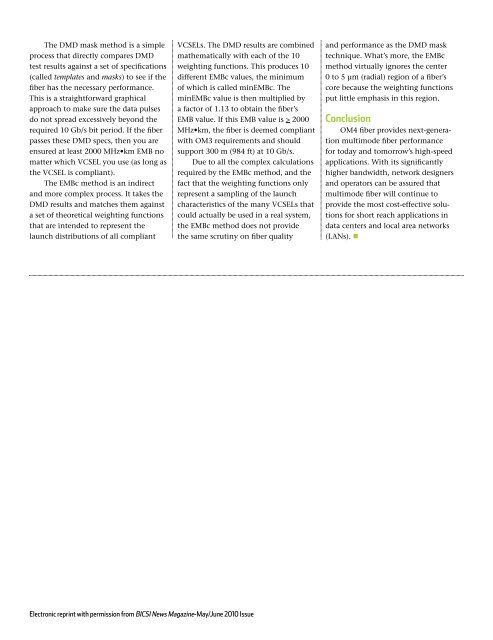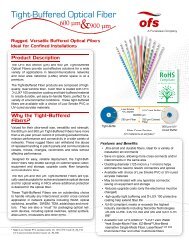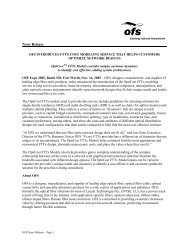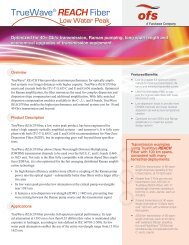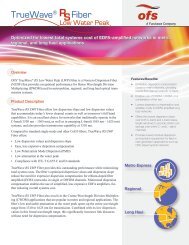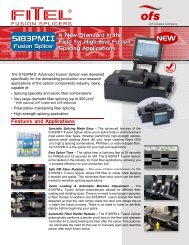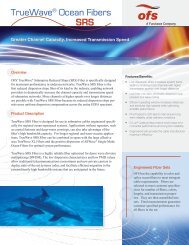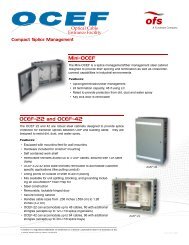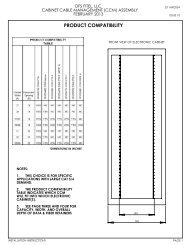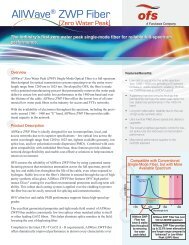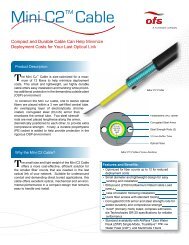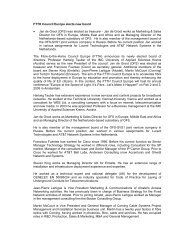BICSI News Magazine - OFS
BICSI News Magazine - OFS
BICSI News Magazine - OFS
Create successful ePaper yourself
Turn your PDF publications into a flip-book with our unique Google optimized e-Paper software.
The DMD mask method is a simple<br />
process that directly compares DMD<br />
test results against a set of specifications<br />
(called templates and masks) to see if the<br />
fiber has the necessary performance.<br />
This is a straightforward graphical<br />
approach to make sure the data pulses<br />
do not spread excessively beyond the<br />
required 10 Gb/s bit period. If the fiber<br />
passes these DMD specs, then you are<br />
ensured at least 2000 MHz•km EMB no<br />
matter which VCSEL you use (as long as<br />
the VCSEL is compliant).<br />
The EMBc method is an indirect<br />
and more complex process. It takes the<br />
DMD results and matches them against<br />
a set of theoretical weighting functions<br />
that are intended to represent the<br />
launch distributions of all compliant<br />
VCSELs. The DMD results are combined<br />
mathematically with each of the 10<br />
weighting functions. This produces 10<br />
different EMBc values, the minimum<br />
of which is called minEMBc. The<br />
minEMBc value is then multiplied by<br />
a factor of 1.13 to obtain the fiber’s<br />
EMB value. If this EMB value is > 2000<br />
MHz•km, the fiber is deemed compliant<br />
with OM3 requirements and should<br />
support 300 m (984 ft) at 10 Gb/s.<br />
Due to all the complex calculations<br />
required by the EMBc method, and the<br />
fact that the weighting functions only<br />
represent a sampling of the launch<br />
characteristics of the many VCSELs that<br />
could actually be used in a real system,<br />
the EMBc method does not provide<br />
the same scrutiny on fiber quality<br />
and performance as the DMD mask<br />
technique. What’s more, the EMBc<br />
method virtually ignores the center<br />
0 to 5 µm (radial) region of a fiber’s<br />
core because the weighting functions<br />
put little emphasis in this region.<br />
Conclusion<br />
OM4 fiber provides next-generation<br />
multimode fiber performance<br />
for today and tomorrow’s high-speed<br />
applications. With its significantly<br />
higher bandwidth, network designers<br />
and operators can be assured that<br />
multimode fiber will continue to<br />
provide the most cost-effective solutions<br />
for short reach applications in<br />
data centers and local area networks<br />
(LANs). •<br />
Electronic reprint with permission from <strong>BICSI</strong> <strong>News</strong> <strong>Magazine</strong>-May/June 2010 Issue


